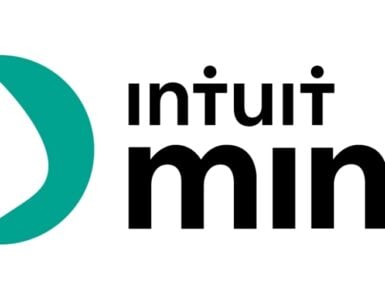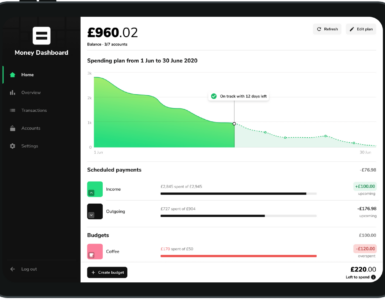Pros and Cons for Businesses and Consumers
In the ever-evolving landscape of modern business, finding the most suitable pricing and revenue model is crucial for both businesses and consumers. The traditional one-time purchase approach has been a tried and tested method for years, but in recent times, subscription-based models have gained tremendous popularity.
Both subscription and one off purchase models offer a number of pros and cons for different reasons that are important for both businesses and consumers to consider.
Subscription Model
Pros for Businesses
- Predictable Revenue: The predictable nature of subscription revenue provides businesses with a stable financial foundation. This regular influx of funds allows for better planning, investment, and growth opportunities.
- Deeper Customer Relationships: Subscriptions foster long-term relationships between businesses and customers. This ongoing engagement allows companies to better understand customer preferences, needs, and pain points, enabling them to tailor products and services accordingly. Businesses like Spotify are utilise this information to create personalised recomendations and a unique experience for each user.
- Enhanced Customer Loyalty: Subscribers often feel a sense of commitment to the brand, leading to increased customer loyalty. Loyal customers are more likely to recommend the service to others, amplifying word-of-mouth marketing.
Cons for Businesses
- High Churn Rate Impact: A high customer churn rate can significantly affect subscription-based businesses. Ensuring ongoing customer satisfaction and adding value consistently is vital to reduce churn.
- Customer Acquisition Costs: Acquiring new subscribers can be costly due to marketing efforts and free trial incentives. Businesses must strike a balance between these costs and the lifetime value of a customer.
- Inflexibility in Pricing: Once customers are subscribed to a particular pricing tier, it might be challenging to adjust the pricing without risking customer dissatisfaction or attrition.
Pros for Consumers
- Cost-Effective Access to Premium Products: Subscription models often offer access to premium products and services that would otherwise be expensive to purchase outright. This affordability enables consumers to enjoy higher-tier offerings.
- Convenience and Automation: Subscribers benefit from automatic renewals and access to new features or content without having to take additional steps or make repeated purchases.
- Bundle and Customization Options: Many subscription services offer bundle options or customization features, allowing consumers to choose plans that suit their individual needs and preferences.
Cons for Consumers
- Subscription Fatigue: As the number of subscription services increases, consumers may suffer from subscription fatigue, feeling overwhelmed by managing multiple recurring payments.
- Cumulative Costs: While individual subscriptions might seem affordable, the cumulative costs can add up, potentially exceeding the budget of some consumers.
- Unused Subscriptions: Consumers might find themselves subscribed to services they no longer use or need, leading to wasted expenses.
One-Time Purchase Model
Pros for Businesses
- Immediate Revenue Injection: One-time purchases result in immediate revenue, which can be especially advantageous for small or cash-strapped businesses.
- Flexible Pricing Strategies: With one-time purchases, businesses can experiment with different pricing strategies or offer discounts to incentivize immediate sales.
- Lower Customer Support Demand: Since customers don’t have ongoing commitments, businesses may experience lower customer support demands, freeing up resources for other aspects of the company.
Cons for Businesses
- Limited Customer Engagement: With a single transaction, businesses have limited opportunities for ongoing customer engagement and interaction, potentially hindering customer understanding and loyalty.
- Customer Acquisition Challenges: Continuously acquiring new customers to sustain sales can be challenging and expensive, especially in competitive markets.
- Product Obsolescence Concerns: Depending on the industry, one-time purchases might lead to concerns about product obsolescence, reducing the chances of repeat purchases.
Pros for Consumers
- Freedom and Flexibility: One-time purchases offer consumers the freedom to choose when and where to buy a product or service without any contractual obligations.
- No Long-Term Commitment: Consumers can avoid long-term commitments, making it easier to switch to different brands or products if they find better options.
- No Accumulating Costs: Without recurring subscriptions, consumers avoid the risk of accumulating costs from multiple services they might not fully utilize.
Cons for Consumers
- Higher Upfront Costs: Some consumers may find it difficult to afford higher-priced products or services with a one-time purchase, leading them to opt for cheaper alternatives.
- Missed Updates and Improvements: Unlike subscribers, one-time purchasers might miss out on regular updates, improvements, or additional features offered to ongoing customers.
- Repetitive Decision Making: For products or services consumed regularly, one-time purchases require consumers to make repeated decisions and purchases, which can be time-consuming.
Hybrid Models and Advancements
It’s worth noting that in response to consumer preferences and market demands, businesses have started to adopt hybrid models that combine aspects of both subscriptions and one-time purchases. For instance:
- Freemium Model: Companies offer basic services or products for free, enticing users to upgrade to premium features through a subscription. Emma does this to esnure that everyone has access to the basics of the service but in order to access the full suite of tools you need to pay for one of our premium subscriptions.
- Membership Programs: Businesses offer a membership-based system where customers pay a recurring fee to access exclusive benefits, but they can also make one-time purchases of other products.
- Usage-Based Subscriptions: Some subscription services charge customers based on actual usage, allowing them to pay for what they consume.
Both subscription and one-time purchase models have their unique advantages and drawbacks for businesses and consumers alike. The decision between the two depends on various factors, such as the nature of the product or service, target audience, market trends, and business objectives.
Ultimately, businesses should carefully consider their target market’s preferences and tailor their pricing models to strike the right balance between generating revenue and providing value to their customers.
On the other hand, consumers should assess their own needs, preferences, and budget constraints to determine which model aligns best with their lifestyle and requirements.
As the marketplace continues to evolve, it’s essential for businesses to remain flexible and adaptable, seeking innovative solutions that cater to the dynamic needs of modern consumers.






